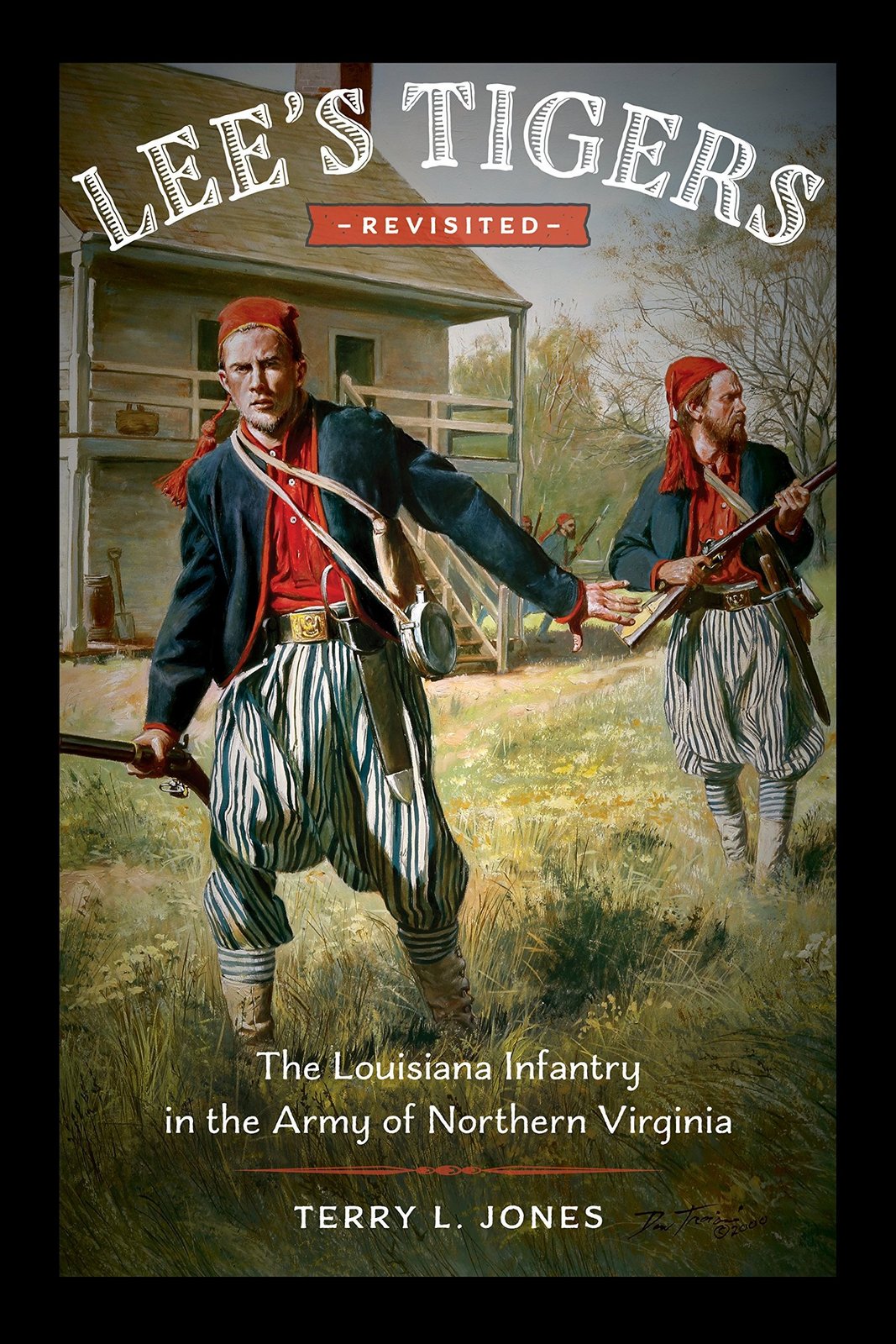Published January 4, 2018
Dr. Terry L. Jones' "Lee's Tigers
Revisited: The Louisiana Infantry in the
Army of Northern Virginia"
Cover Provided.
Louisiana State University Press has released a new Civil War book by Dr. Terry L.
Jones, professor emeritus of history at the University of Louisiana Monroe.
"Lee’s Tigers Revisited: The Louisiana Infantry in the Army of Northern Virginia"
is a greatly expanded edition of "Lee’s Tigers," Jones’ first book that was published
in 1987. It was a History Book Club selection and won the General L. Kemper Williams
Prize, an award that recognizes the best book published on Louisiana History each
year.
"Lee’s Tigers Revisited" is a history of the approximately 12,000 Louisiana infantrymen
who fought in Robert E. Lee’s Army of Northern Virginia. Sometimes derided as the
“wharf rats from New Orleans” and the “lowest scrappings of the Mississippi,” the
Louisiana Tigers earned a reputation for being drunken and riotous in camp, but courageous
and dependable on the battlefield. To honor them, LSU adopted the Tiger nickname for
its football team at the turn of the 20th century, and the Louisiana National Guard’s
256th Infantry Brigade is known today as the Tiger Brigade.
Louisiana’s soldiers, some of whom wore colorful French Zouave uniforms, reflected
the state’s multicultural society, with some regiments consisting of French-speaking
Creoles and others being dominated by European immigrants. The Tigers played a key
role in numerous battles, such as resisting the initial Union onslaught at First Manassas,
making possible Stonewall Jackson’s famous Valley Campaign, holding the line at Second
Manassas by throwing rocks when they ran out of ammunition, temporarily breaking the
Union line at Gettysburg, containing the Union breakthrough at Spotsylvania’s Bloody
Angle, and leading Lee’s attempted breakout of Petersburg at Fort Stedman.
The Tigers achieved equal notoriety for their outrageous behavior off the battlefield,
so much so that sources suggest that no general wanted them in his command. Casualties
were so heavy that fewer than four hundred Louisiana Tigers were still on duty when
Lee surrendered at Appomattox.
Dr. Terry L. Jones, professor emeritus of history at the
University of Louisiana Monroe. Photo
provided.
"Lee’s Tigers Revisited" incorporates new material Jones has collected over the years
and is being released to commemorate the book’s original publication 30 years ago.
It uses letters, diaries, memoirs, newspaper articles, and muster rolls to provide
a detailed account of the origins, enrollments, casualties, and desertion rates of
the Louisiana Tigers. Numerous maps that were commissioned for this edition show the
Tigers’ positions on key battlefields. By utilizing first-person accounts and official
records, Jones provides the definitive study of the Louisiana Tigers and their harrowing
experiences in the Civil War.
Jones is a native of Winn Parish and taught history at ULM for 25 years. He is the
author or editor of eight other books, including "Louisiana in the Civil War: Essays
for the Sesquicentennial," "Campbell Brown’s Civil War," and "The Louisiana Journey."


